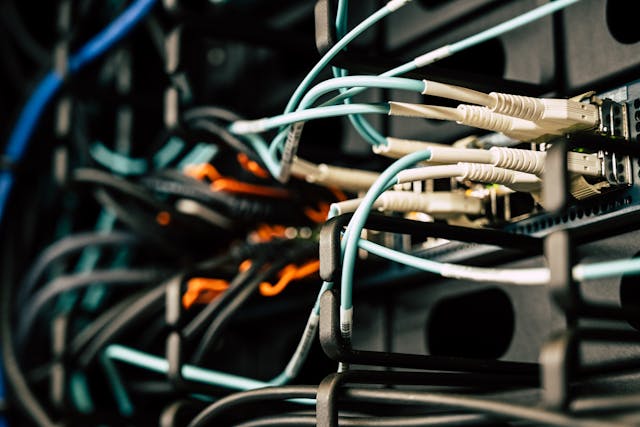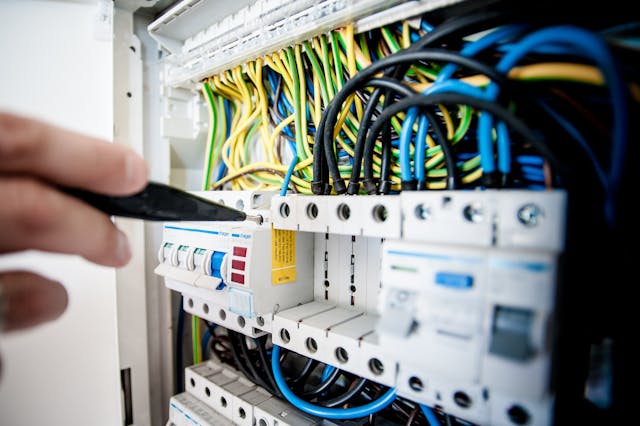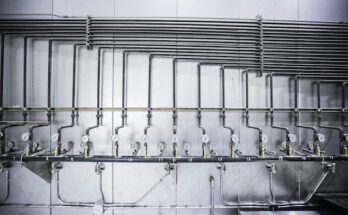The pillar of any successful business in Australia is its data cabling infrastructure. With options ranging from traditional copper to modern fibre optic cabling, understanding the distinctions between these two can significantly impact your business operations. This article explores the differences between copper and fibre data cabling installation, offering insights to help Australian businesses make informed decisions.
Understanding Copper Cabling
Copper cabling has been a staple in telecommunications for decades, known for its reliability and flexibility. It operates by transmitting electrical signals through copper wires, making it an excellent conductor for data transmission over short distances. Its cost-effectiveness and ease of installation make it a popular choice for small businesses or those with limited data transfer needs.
Advantages of Copper Cabling:
- Cost-effective: Generally, less expensive upfront compared to fibre optics.
- Flexibility: Can be easily bent and routed around office spaces without damage.
Limitations of Copper Cabling:
- Electromagnetic Interference (EMI): Prone to interference from nearby electrical devices, which can degrade signal quality.
- Distance and Speed Limitations: Signal loss occurs over long distances, limiting its effectiveness for larger networks.
Exploring Fibre Optic Cabling
Fibre optic cabling is the front-runner in modern data cabling technologies, utilising light instead of electricity to transmit data. This method allows for faster data transfer rates over much longer distances than copper cabling, with minimal signal loss. Fibre optics are immune to electromagnetic interference, making them ideal for environments with high EMI.

Advantages of Fibre Optic Cabling:
- High Bandwidth: Supports significantly higher data transfer rates, accommodating growing data needs.
- Long Distance Transmission: Maintains signal quality over much longer distances without the need for signal boosters.
- EMI Immunity: Unaffected by electromagnetic interference, ensuring more stable data transmission.
Limitations of Fibre Optic Cabling:
- Higher Initial Cost: Installation and materials can be more costly than copper, though prices have decreased as the technology becomes more common.
- Specialised Installation: Requires specialised technicians for installation and repairs, potentially increasing overall costs.
Performance and Applications
When comparing performance, fibre optic cabling outranks copper in both speed and distance, making it well-suited for large-scale operations and data centres. Copper cabling, however, remains a viable option for smaller networks or businesses with less demanding data transfer needs.
Cost considerations also play a crucial role. While the initial outlay for fibre optic cabling might be higher, the long-term benefits, such as reduced maintenance costs and scalability, can offset these initial expenses, making fibre optics a smart investment for futureproofing your network.

Choosing the Right Cabling for Your Business in Australia
The decision between copper and fibre optic data cabling installation boils down to your business’s specific needs. Assessing factors like your current and future data demands, budget constraints, and the physical layout of your premises will guide you towards the right choice.
For Australian businesses looking to stay ahead, investing in the right data cabling infrastructure is crucial. Whether opting for the traditional reliability of copper or the advanced capabilities of fibre optics, ensuring your data cabling installation meets your needs is key to unlocking greater efficiency and connectivity.
Companies specialising in this field offer consultative approaches to tailor affordable and efficient cabling solutions for businesses of all sizes, ensuring your infrastructure not only meets today’s demands but is also poised for tomorrow’s advancements.
Deciding on the type of data cabling installation for your Australian business is a significant step towards enhancing your operational efficiency and preparing for future growth. With the technological landscape continually evolving, aligning with a knowledgeable partner to design and install your data cabling can provide the foundation your business needs to thrive in the digital era.




